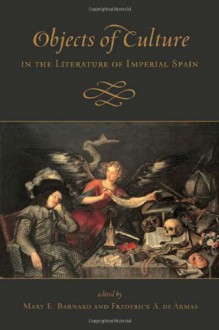Collecting and displaying finely crafted objects was a mark of character among the royals and aristocrats in Early Modern Spain: it ranked with extravagant hospitality as a sign of nobility and with virtue as a token of princely power. Objects of Culture in the Literature of Imperial Spain...
show more
Collecting and displaying finely crafted objects was a mark of character among the royals and aristocrats in Early Modern Spain: it ranked with extravagant hospitality as a sign of nobility and with virtue as a token of princely power. Objects of Culture in the Literature of Imperial Spain explores how the writers of the period shared the same impulse to collect, arrange, and display objects, though in imagined settings, as literary artefacts.These essays examine a variety of cultural objects described or alluded to in books from the Golden Age of Spanish literature, including clothing, paintings, tapestries, playing cards, monuments, materials of war, and even enchanted bronze heads. The contributors emphasize how literature preserved and transformed objects to endow them with new meaning for aesthetic, social, religious, and political purposes – whether to perpetuate certain habits of thought and belief, or to challenge accepted social and moral norms.
show less

